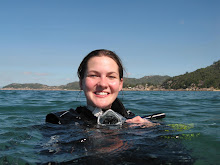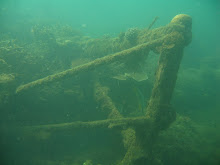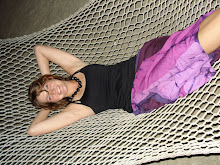 This field trip was more my style. I was out on the water on a fishing boat getting my hands dirty, the perfect atmosphere. We all arrived at the dock to board the JCU research vessel, the James Kirby. The day's activities included: trawling for prawns, seeing if the bycatch reduction device (BRD) kept most big game out of the nets, weighing and bagging fish caught for further analysis, throwing back sea snakes, puffers, and anything else that didn't need to be collected. At this point you are probably scratching your heads wondering what all of this means. Don't fear, I will explain.
This field trip was more my style. I was out on the water on a fishing boat getting my hands dirty, the perfect atmosphere. We all arrived at the dock to board the JCU research vessel, the James Kirby. The day's activities included: trawling for prawns, seeing if the bycatch reduction device (BRD) kept most big game out of the nets, weighing and bagging fish caught for further analysis, throwing back sea snakes, puffers, and anything else that didn't need to be collected. At this point you are probably scratching your heads wondering what all of this means. Don't fear, I will explain.For those that are interested, these specific trawls are used in fisheries world wide in hopes that fishermen will stick to what they are fishing for (their target). "Bycatch Reduction Devices (BRDs) are used in trawl fisheries to allow fish that are not targeted by the fishers to escape from the net before it is hauled back into the boat. It is good news for the marine environment as it reduces the amount of bycatch that dies as a result of trawling" (www.afma.gov.au). In class, we learn about the dynamics of a population of fish and we hope these sorts of fishing techniques help preserve populations so they can continue to grow and reproduce.

In this study, we did a total of 4 trawls, each have two sets of data (starboard/port side). We weighed 7 different species of fish and made sure we took into account things we caught and threw back. Overall, we really didn't catch all that much. The biggest weight we had was about 4 kg. It was a great time and I learned a lot! We only caught 2 prawns :( Sad day. Everything went smoothly and we made it back to shore safely. I can't wait to go back out onto the sea! Let me know if you guys have any questions about the trip! I would be more than happy to answer them. There are pictures of the boat trip up. Make sure to check them out. Miss you guys!




No comments:
Post a Comment